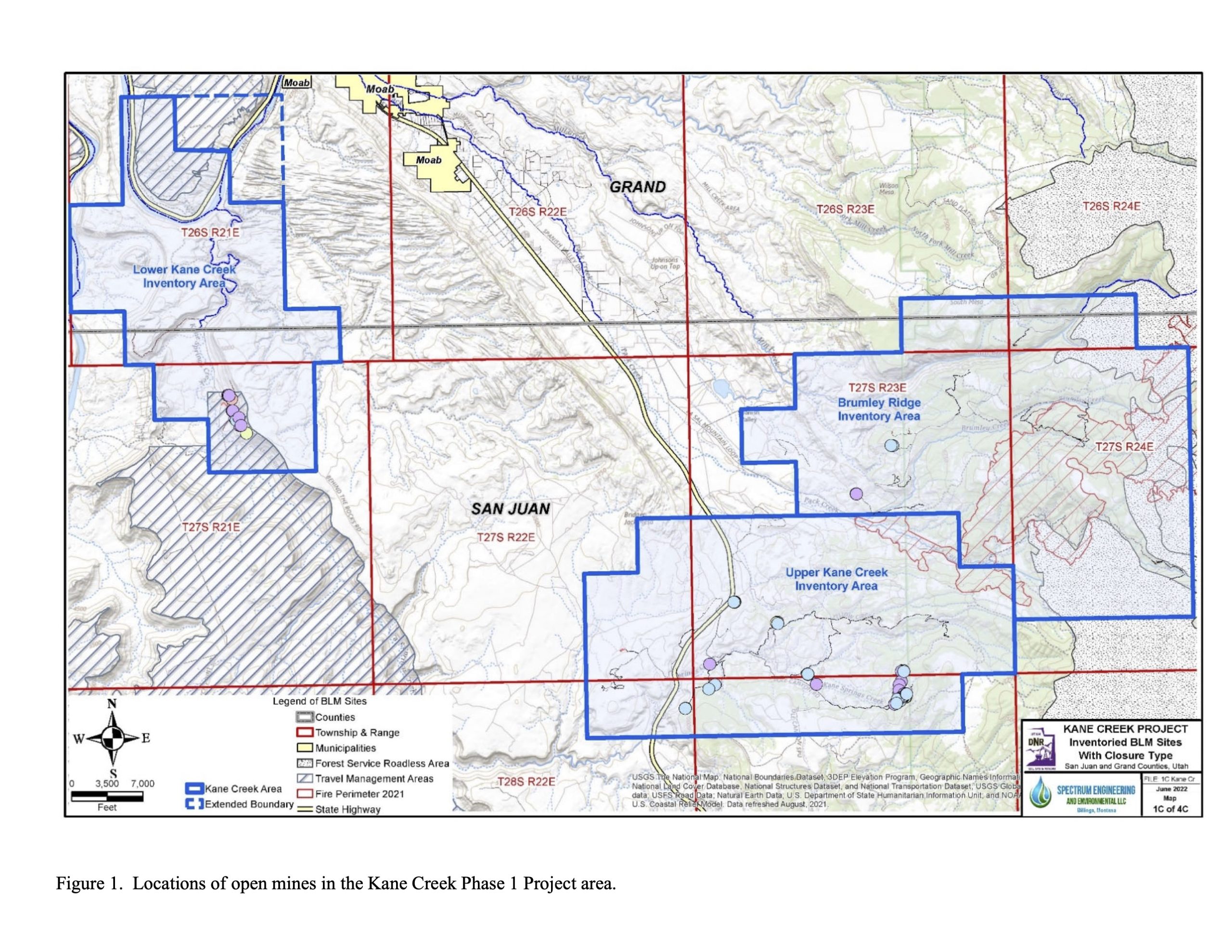Some information may be outdated.
The Canyon Country office of the Bureau of Land Management, in cooperation with the Abandoned Mine Reclamation Program run by the Utah Division of Oil, Gas, and Mining, recently began a project to fill in 74 historic uranium mines in San Juan County. The mines are being filled in for safety reasons, according to BLM Geologist Jennifer Whittington, and were picked because of their proximity to high visitation areas.
The reclamation program has been in the works for years: according to the BLM, there are between 8,000 and 11,000 abandoned mines in the state.
The BLM strongly discourages people from going into mine shafts. According to the national “Stay Out, Stay Alive” campaign, mine shafts contain dangers such as unstable structures, explosives, poor ventilation, radioactivity, and hazardous wastes; shafts themselves are also dangerous, as potential explorers could fall down them.
The majority of the mines for this project are located off Pole Canyon Rd., which is accessible from Highway 191; the mines are located along Kane Springs Creek. Thirteen other mines are located just off of Kane Spring Rd, which splits off from Kane Creek Rd.
The BLM uses a few methods for filling in the mines, which are each dependent on what the opening looks like, Whittington said. First, BLM staff will assess the opening for its structural integrity: is it safe enough to install something on it, or is it unstable enough that it should be entirely filled in? If the opening is unstable, or an extreme safety hazard, the team will backfill it with dirt.
If the opening is safe, the BLM will assess the cultural, biological, and paleontological assets of the shaft by sending in a team donned in scuba gear, so they’re protected from toxic gas or waste. Then the balance begins: how to close a mineshaft for safety purposes while also preserving whatever’s inside of it.
If there are historic features of the shaft, such as inscriptions, the BLM will install a stone wall behind the features, so the shaft is closed but the features are still visible. If the opening is a habitat for animals—Whittington said bats typically make a home in mine shafts, but also mountain lions and even bears—the BLM will install a metal grate, so animals can still go in and out. They’ll also use the grate if there are historic items deep inside the shaft, so they’re still visible and accessible to any future researchers; or, if the shaft has become a part of the area’s ecology—sometimes shafts will carry water, Whittington said. The team will also look for fossils, and if they find any, they’ll notify the BLM’s paleontologists.
“These old historic mine openings are really cool and really neat, but they’re dangerous,” she said. “We’re working to mitigate those dangers while preserving the historic aspect—it’s important to preserve that mining culture.”
The project will hopefully be finished by December, she said. The BLM is assessing another 92 other mine openings in the area to be potentially closed next year.
Appreciate the coverage? Help keep local news alive.
Chip in to support the Moab Sun News.





